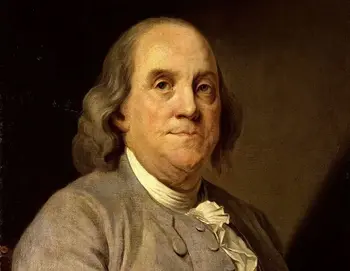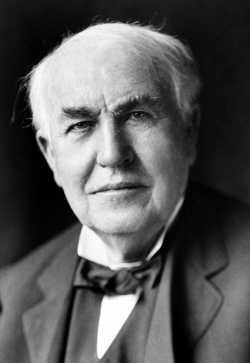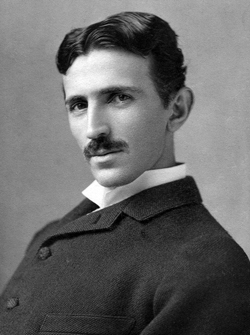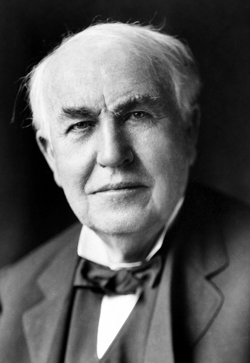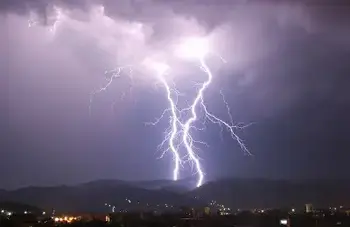A Timeline Of History Of Electricity
By R.W. Hurst, Editor
A timeline of history of electricity highlights key discoveries from ancient static electricity to modern power grids. Explore milestones from Thales to Tesla, Edison to smart grid innovations, showing how electricity evolved into a critical force shaping today’s technology and life.
What is a Timeline Of History Of Electricity?
A historical timeline tracing the development of electricity reveals how science and innovation transformed the world:
✅ Key milestones from ancient discoveries to modern-day applications
✅ Contributions from pioneers like Faraday, Edison, and Tesla
✅ Evolution of power systems, from early experiments to smart grids
This article explains the history of electricity clearly—read more here.
Milestones in the History of Electricity
The story of electricity is not one of a single invention, but a fascinating chronicle of gradual discovery and relentless innovation. Humankind's early encounters with phenomena like magnetism and static electricity date back millennia before their distinct yet interconnected natures were truly grasped. It was a journey of incremental insights, punctuated by groundbreaking leaps forward that progressively illuminated the forces shaping our modern world.
This timeline serves as a detailed chronological resource, highlighting pivotal events, discoveries, and theoretical advancements in the fields of static electricity, current electricity, electricity and magnetism, and their eventual unification, from ancient observations to the foundational period of modern electrical science. The story of who invented electricity is filled with surprising twists, from ancient discoveries to the groundbreaking work of pioneers like Franklin, Faraday, and Tesla.
Ancient Discoveries & Early Observations (Pre-600 BC – 1500s AD)
-
c. 900 BC - Lodestone Attraction: Accounts, possibly legendary, describe Magnus, a Greek shepherd, observing black stones (lodestones) attracting iron, leading to the name of the region Magnesia. This marks some of the earliest observations of magnetism.
-
c. 600 BC - Static Electricity: Thales of Miletus (Greek philosopher) describes how amber (Greek: elektron), when rubbed with cat fur, attracts light objects like feathers. This is one of the earliest documented observations of static electricity.
-
1269 - Magnetic Poles: Petrus Peregrinus of Picardy, Italy, publishes "Epistola de magnete," detailing his discovery that natural spherical magnets (lodestones) possess two poles and that magnetic needles align along lines connecting these poles.
The Dawn of Electrical Science (1600s – 1700s)
-
1600 - Coining "Electricity": William Gilbert, English physician to Queen Elizabeth I, publishes "De Magnete, magneticisque corporibus," formally coining the term "electricity" from the Greek elektron. He also introduces terms like electric force, magnetic pole, and electric attraction, and theorizes an "electric fluid" liberated by rubbing.
-
c. 1620 - Electrical Repulsion: Niccolo Cabeo (Italian philosopher and theologian) observes and documents that electricity can be not only attractive but also repulsive.
-
1630 - Fluorescence: Vincenzo Cascariolo (Bolognese shoemaker) discovers the phenomenon of fluorescence.
-
1638 - Aether Theory of Light: René Descartes (French philosopher) theorizes that light is a pressure wave travelling through a pervasive aether, proposing properties for this fluid that allow for calculations of light's reflection and refraction.
-
1644 - Vortex Theory of Magnetism: René Descartes proposes that magnetic poles result from a spinning vortex of one of his theoretical fluids, a theory that remained popular for a century.
-
1657 - Principle of Least Time: Pierre de Fermat (French mathematician) demonstrates that Fermat's Principle of Least Time can explain the reflection and refraction of light, laying the groundwork for wave optics.
-
1660 - Static Electricity Generator: Otto von Guericke (German physicist) invents an early machine capable of producing static electricity, a rotating sulphur ball. See how the electricity generator emerged from Faraday’s work on electromagnetic induction.
-
1665 - Diffraction of Light: Francesco Maria Grimaldi (Italian physicist) posthumously reports his discovery and names the phenomenon of diffraction, the bending of light around opaque objects.
-
1667 - Newton's Rings & Wavefronts: Robert Hooke (English scientist) reports observations of interference rings (later called Newton's Rings) and develops a wavefront derivation for reflection and refraction.
-
1671 - Particle Theory of Light: Isaac Newton (English physicist) argues against light being a vibration of the aether, preferring it to be something capable of travelling through it, leaning towards a corpuscular (particle) theory.
-
1675 - Speed of Light (Astronomical): Olaf Roemer (Danish astronomer) uses the eclipses of Jupiter's moons to make the first quantitative estimate of the speed of light ( m/s).
-
1678 - Huygens' Principle: Christiaan Huygens (Dutch physicist) introduces his famous principle of wavefront construction to explain light propagation, particularly double refraction.
-
1729 - Electrical Conduction & Surface Charge: Stephen Gray (English electrician) demonstrates that electricity can be conducted through wires over significant distances and that electric charge resides on the surface of electrified objects.
-
1733 - Two Types of Electricity: Charles François du Fay (French chemist) discovers that electricity exists in two kinds, which he terms resinous (-) and vitreous (+).
-
1745 - Leyden Jar (Capacitor): Pieter van Musschenbroek (Dutch physicist) invents the Leyden Jar, the first device capable of storing significant amounts of static electricity (capacitor). Georg Von Kleist independently made a similar discovery earlier the same year.
-
1747 - One-Fluid Theory & Conservation of Charge: Benjamin Franklin (American polymath) proposes the one-fluid theory of electricity, where a single fluid flows, and establishes the principle of conservation of charge. He also labels the flowing fluid as "positive," an convention that persists. Discover how Ben Franklin discovered electricity. Explore the myths and facts about Ben Franklin’s electricity experiments.
-
1748 - First Fluorescent Light: Sir William Watson (English physicist) creates the first glow discharge using an electrostatic machine and a vacuum pump, effectively the first "fluorescent light bulb."
-
1750 - Magnetic Force Law (Inverse Square): John Michell (English natural philosopher) determines that the force between magnetic poles follows an inverse square law.
-
1759 - Electrical Induction: Francis Ulrich Theodore Aepinus (German natural philosopher) demonstrates that electrical effects are a combination of fluid flow and action at a distance, and discovers charging by induction.
-
1766 - Inverse Square Law of Electrostatic Force: Joseph Priestley (English chemist), inspired by Franklin, deduces that the electric force law is inverse square, analogous to gravity, by observing no charge inside hollow charged vessels.
-
c. 1775 - Capacitance & Resistance (Unpublished): Henry Cavendish (English scientist) develops the concepts of capacitance and resistance, though his work remains largely unpublished until 1879 by Lord Kelvin. See our article what is capacitance through the invention of the Leyden jar and the later development of capacitors.
-
1780 - Animal Electricity: Luigi Galvani (Italian physician) observes that dead frog legs twitch when touched by dissimilar metals, coining the term "animal electricity" to describe what we now understand as nerve impulses.
-
1785 - Coulomb's Law: Charles Augustin Coulomb (French physicist) uses a torsion balance to experimentally verify that the electric force law is inverse square (now known as Coulomb's Law). He also proposes a two-fluid theory.
-
1793 - First Electric Battery (Voltaic Pile): Alessandro Volta (Italian physicist) invents the voltaic pile, the first true electric battery, capable of producing a steady, continuous electric current, by stacking discs of dissimilar metals separated by wet cardboard.
The Age of Electromagnetism & Generation (1800s – Mid-1800s)
-
1800 - Electrolysis of Water: William Nicholson and Anthony Carlisle (English chemists) use Volta's pile to perform the electrolysis of water, separating it into hydrogen and oxygen.
-
1801 - Wave Theory of Light Progresses: Thomas Young (English polymath) provides a wave-based explanation for Newton's rings and interference phenomena, strengthening the wave theory of light.
-
1807 - Chemical-Electrical Connection: Humphrey Davy (English chemist) shows that the voltaic pile's action is fundamentally chemical, linking chemical and electrical effects.
-
1808 - Polarization of Light: Etienne Louis Malus (French engineer) discovers the polarization of light, observing that light reflected at certain angles or passed through crystals has a preferred orientation, posing a challenge for existing wave theories.
-
1812 - Faraday Begins Work: Michael Faraday (English scientist) begins his legendary career as a scientific assistant to Sir Humphrey Davy.
-
1813 - Gauss's Law (Rediscovery): Karl Friedrich Gauss (German mathematician) rediscovers the divergence theorem, which later becomes known as Gauss's Law in electromagnetism.
-
1816 - Transverse Waves of Light: François Arago and Augustin Fresnel (French physicists) demonstrate that light of differing polarizations cannot interfere, leading Thomas Young to suggest that light waves must be transverse (vibrating perpendicular to the direction of travel), a crucial insight that ultimately solidifies the wave theory.
-
1820 - Electromagnetism Discovered (Oersted): Hans Christian Ørsted (Danish physicist) discovers that an electric current in a wire produces a magnetic field, causing a compass needle to deflect, establishing the fundamental link between electricity and magnetism.
-
1820 - Ampère's Force Law: André-Marie Ampère (French physicist) quickly followed Ørsted's discovery by demonstrating that parallel electric currents exert attractive or repulsive forces on each other. He develops a mathematical framework for electrodynamics. Learn how Ampere’s Law connects current and magnetic fields.
-
1820 - Biot-Savart Law: Jean-Baptiste Biot and Félix Savart (French physicists) quantify the magnetic force exerted by a current-carrying wire, leading to the Biot-Savart Law. Understand the concept behind the Biot-Savart Law.
-
1821 - First Electric Motor: Michael Faraday invents the first electric motor, demonstrating continuous rotational motion from an electric current interacting with a magnetic field.
-
1822 - Thermoelectric Effect (Seebeck): Thomas Johann Seebeck (German physicist) discovers the thermoelectric effect, showing that a temperature difference in a circuit of dissimilar metals can generate an electric current.
-
1826 - Ohm's Law: Georg Simon Ohm (German physicist) establishes the relationship between voltage, current, and resistance in an electrical circuit, now known as Ohm's Law (). His work clarifies the concept of voltage as the driving force for current. Explore Ohm’s Law and how it connects current, voltage, and resistance. Use the Ohm’s Law formula to calculate electrical values easily. See how the discovery of electrical resistance helped shape our understanding of how materials impede current.
-
1831 - Electromagnetic Induction (Faraday): Michael Faraday discovers electromagnetic induction, showing that a changing magnetic field can induce an electric current in a nearby circuit. This fundamental principle underpins electric generators and transformers.
-
1832 - Independent Discovery of Induced Currents: Joseph Henry (American scientist) independently discovers induced currents, similar to Faraday's work.
-
1833 - Quantized Electric Charge (Early Idea): Michael Faraday postulates that a "certain absolute quantity of the electric power [charge] is associated with each atom of matter," hinting at the concept of quantized electric charge.
-
1834 - Self-Inductance: Faraday discovers self-inductance, where a changing current in a circuit induces an electromotive force within the same circuit.
-
1834 - Peltier Effect: Jean Charles Peltier (French physicist) discovers the Peltier effect, the inverse of the Seebeck effect, where current flow in a circuit of dissimilar metals causes heating or cooling at their junctions.
-
1834 - Lenz's Law: Emil Lenz (Russian physicist) formulates Lenz's Law, which states that the direction of an induced current is always such that it opposes the change in magnetic flux that produced it. This article explores Lenz’s Law and electromagnetic induction.
-
1837 - Dielectric Constant: Michael Faraday introduces the concept of the dielectric constant, describing how insulating materials affect electric fields.
-
1839 - Fuel Cell: Sir William Grove (Welsh judge and inventor) develops the first fuel cell, generating electricity through the chemical reaction of hydrogen and oxygen.
-
1841 - Energy Conservation in Circuits: James Prescott Joule (English physicist) demonstrates that energy is conserved in electrical circuits, linking electrical energy, thermal heating, and chemical transformations. Get a better grasp of electric circuits and their key components, such as conductors, resistors, and capacitors.
-
1845 - Faraday Rotation: Michael Faraday discovers the Faraday effect (or Faraday rotation), showing that the plane of polarization of light can be rotated by a magnetic field, providing early evidence of the relationship between light and electromagnetism.
-
1846 - Diamagnetism: Michael Faraday discovers diamagnetism, a form of magnetism exhibited by substances that are weakly repelled by a magnetic field. Get a deeper understanding of Faraday’s Law of Induction.
-
1847 - Conservation of Energy (Helmholtz): Hermann von Helmholtz (German physicist) emphatically states the principle of conservation of energy, extending it to various forms including electrical, voltaic, and magnetic.
Towards Unified Theory & Modern Power (Mid-1800s – Early 1900s)
-
1848-1849 - Kirchhoff's Laws & Potential: Gustav Kirchhoff (German physicist) extends Ohm's work, providing his famous laws for circuit networks and formally showing that Ohm's "electroscopic force" is identical to the electrostatic potential.
-
1849 - More Accurate Speed of Light: Hippolyte Fizeau (French physicist) uses a rapidly rotating toothed wheel to measure the speed of light ( m/s) with greater precision.
-
1850 - Magnetic Permeability & Susceptibility: William Thomson (Lord Kelvin) (Scottish physicist) introduces the concepts of magnetic permeability and magnetic susceptibility.
-
1853 - RLC Circuit Theory: William Thomson (Lord Kelvin) provides the theoretical description for the RLC circuit, explaining the oscillations observed in capacitive discharges.
-
1854 - Telegraphy Equation (Partial): William Thomson (Lord Kelvin) derives a partial telegraphy equation, highlighting the importance of capacitance in signal speed along transmission lines.
-
1855 - Field Theory Mathematical Framework: James Clerk Maxwell (Scottish mathematician and physicist) writes a memoir attempting to merge Faraday's intuitive field lines with Thomson's mathematical analogies, laying the groundwork for a comprehensive field theory.
-
1857 - Full Telegraphy Equation & Speed of Light Connection: Gustav Kirchhoff derives the full telegraphy equation (including inductance), recognizing that for low resistance, the signal propagates at a speed very close to the speed of light, making him the first to suggest this profound connection. Get familiar with Kirchhoff’s Law and how it applies to circuit analysis.
-
1861 - Mechanical Model of EM Field: James Clerk Maxwell publishes his mechanical model of the electromagnetic field, where magnetic fields correspond to rotating vortices and electric fields to elastic displacements, leading him to derive the wave equation for electromagnetic waves fully.
-
1864 - Maxwell's Equations: James Clerk Maxwell presents his seminal memoir, "A Dynamical Theory of the Electromagnetic Field," which articulates the complete set of Maxwell's Equations, mathematically unifying electricity, magnetism, and light. He famously concludes that "light consists of the transverse undulations of the same medium which is the cause of electric and magnetic phenomena."
From Theory to Application – The Modern Age of Electricity (Late 1800s – Mid-1900s)
-
1873 – Electrical Units Standardized: The British Association for the Advancement of Science proposes standardized electrical units, laying the foundation for what would become the SI system.
-
1879 – Practical Electric Lighting: Thomas Edison (American inventor) successfully tests the first long-lasting carbon filament light bulb, making electric lighting commercially viable. Learn more about Thomas Edison’s role in electricity.
-
1881 – First International Electrical Congress: Held in Paris, this congress leads to the international agreement on electrical units and terminology.
-
1882 – First Power Station: Edison opens the Pearl Street Station in New York City, the first commercial power station, marking the beginning of centralized electricity generation and distribution.
-
1883 – Tesla's AC Induction Motor Design: Nikola Tesla (Serbian-American inventor) develops his first design for an alternating current (AC) induction motor, which would later revolutionize electric power systems. Learn how alternating current became the dominant form of power transmission thanks to pioneers like Tesla and Westinghouse.
-
1887 – Tesla Patents AC Motor: Tesla files patents for his AC polyphase motor and transmission system, introducing an efficient and scalable alternative to Edison's DC systems.
-
1888 – Westinghouse Adopts AC: George Westinghouse licenses Tesla’s AC system and begins developing AC-based power distribution, initiating the "War of Currents" between AC and DC.
-
1891 – Tesla’s High-Frequency Coil: Tesla invents the Tesla Coil, enabling high-voltage, high-frequency experiments that advance radio and wireless technologies.
-
1893 – AC Triumphs at Chicago World's Fair: Westinghouse and Tesla's AC system is chosen to power the World’s Columbian Exposition in Chicago, proving the efficiency and safety of alternating current to the public.
-
1895 – First Hydroelectric Plant at Niagara Falls: Tesla and Westinghouse complete the world’s first large-scale hydroelectric power plant, transmitting AC electricity over 20 miles to Buffalo, New York.
-
1897 – Electron Discovered: J.J. Thomson identifies the electron as a subatomic particle, deepening understanding of electric current.
-
1904 – Thermionic Valve (Vacuum Tube): John Ambrose Fleming invents the diode vacuum tube, which enables rectification and early radio transmission.
-
1906 – Triode Amplifier: Lee De Forest adds a control grid to the vacuum tube, creating the triode—an amplifier that lays the groundwork for electronics and radio broadcasting.
-
1920s–1930s – National Grid Development: Countries like the UK and the USA began building interconnected electrical grids, making electricity widely accessible.
-
1931 – Discovery of the Neutron: James Chadwick’s discovery of the neutron contributed to later advances in nuclear power.
-
1947 – Invention of the Transistor: John Bardeen, Walter Brattain, and William Shockley invent the transistor at Bell Labs, initiating the modern era of electronics and digital technology.





